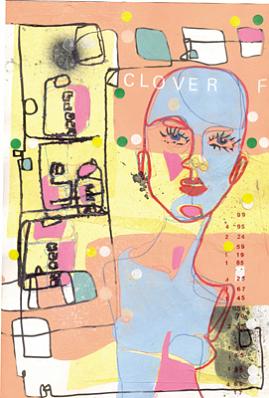News and information from St. George's British International School Art Department, Rome, Italy
Friday, June 16, 2006
Tuesday, June 13, 2006
Summer Holiday Task for Pupils Beginning I.B. Art in September 2006
Your summer holiday task forms the beginning of your I.B. Art practical work and research studies coursework upon which your entire final grade is based. It should therefore be completed to a very high standard of presentation and content.
· First get yourself a Research Workbook ! They Must be A4 size (30cm x 20cm approx.) hard bound (usually in black ) with 140 pages (280 sides). They normally cost around €15. I know it seems a bit mean expecting you to buy your own, but if I bought everyone a book then we’d have less money for paint, paper, clay etc. etc…. Also I feel students are less likely to leave their book on the bus, or drop it in the river if is their own.
The Research tasks:
· Scale - how does a work of art’s size affect the viewer (and how is seeing an actual work of art different from seeing a reproduction in a book or on the internet for example?)
· Materials - what is it created from ?- why? - what effect does the material give?
· Content - what does the work represent ? Narrative - does it tell a story ? Does the time and place in which the piece was made affect the style and intended meaning of the work? give your personal interpretation.
· The Artist - Who ? When ?
· Even basic descriptions of colour, shapes etc. are useful - how is the mood or atmosphere of a piece affected by the artists use of colour, texture, line, pattern etc. ?
· Value judgement - is the piece successful ? Why ?
· Why was this piece of Art created? Who paid for it? Why? What task does this piece of Art hope to perform? Instruction etc?
· Part Two : Research for IB Coursework Project
Native American headgear, gas masks, gimp masks, Japanese theatrical masks, motorcycle helmets, Venetian carnival masks, traditional tribal masks from various African nations, cricket masks, hockey masks, armour, skulls of animals, fish and birds, diving masks and helmets, welding masks, Egyptian burial masks, etc etc etc….
The theme of the poster is ‘Investing in Agriculture for Food Security’. This must be written clearly on your poster (in any language) Your poster can be between 30 x 40 cm and 50 x 70 cm (see me for paper). Aim to illustrate the idea of self help rather than hand outs to the poor. Have a look at www.fao.org/wfd/ and also www.feedingminds.org for more ideas. Do a couple of pages of research and studies in your book before making the final poster. Be bold – which posters do you remember most clearly? which were most effective in communicating their message to you?
Year 12 IB Art Holiday Task
The Research Workbook tasks:
· Scale - how does a work of art’s size affect the viewer (and how is seeing an actual work of art different from seeing a reproduction in a book ?)
· Materials - what is it created from ?- why? - what effect does the material give?
· Content - what does the work represent ? does it tell a story ? give your personal interpretation.
· The Artist - Who ? When ?
· Even basic descriptions of colour, shapes etc. are useful - how is the mood or atmosphere of a piece affected by the artists use of colour, texture, line, pattern etc. ?
· Value judgement - is the piece successful ? Why ?
· Scale - how does the building, monument or built environment relate on a “human scale” - does it “dwarf” people - why? (to impress, to accommodate a specific use, to inspire fear, devotion etc.)
· Inspiration/style - can you see any connections with art or design movements (Art Nouveau, Neo Classical, Art Deco, Modernism? Etc.)
· Decoration - is it decorated ? Why? - Why would you decorate a building? In what style ? Describe - organic (plant forms etc.), geometrical simplicity etc .
· How well does the space, monument or building fulfil its intended role ?
· How does it relate to the location in which it is placed (natural environment, other buildings etc.?)
At least 10 sides relating to images, artefacts, techniques, experimentation observations and artists’ work connected with your chosen theme for you first personally directed project. Good preparation is essential for a successful project. Take loads of photographs, make loads of drawings – even stuff which is too large to fit in your book. Go nuts – develop an obsession!


